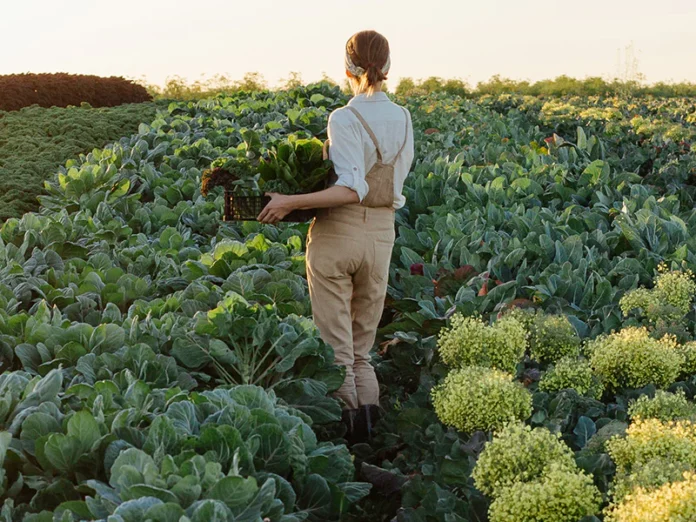Introduction
In 2025, the agricultural landscape is undergoing a profound transformation as farmers worldwide move away from chemical-heavy practices toward soil conservation agriculture (SCA). This approach, defined by minimal tillage, permanent soil cover, and diverse crop rotations, aims to rebuild soil ecosystems degraded by decades of synthetic inputs and intensive plowing [4]. Recent research underscores its urgency: over half of agricultural land is moderately to severely degraded, threatening food security amid climate pressures [G4]. Expert Claude Bourguignon, a soil microbiologist, emphasizes gradual microbial restoration through methods like wood chip mulching to foster biological activity without heavy investments. This section provides an overview of SCA’s principles, contrasting them with chemical agriculture’s environmental toll, and sets the stage for examining trends, benefits, and obstacles.
Key Principles and Factual Foundations
Soil conservation agriculture rests on three core principles: minimal soil disturbance, permanent vegetative cover, and crop diversification. These practices contrast sharply with chemical agriculture’s reliance on synthetic fertilizers and pesticides, which often lead to soil erosion and biodiversity loss [1]. A 2024 Nature Communications study reveals that SCA results in a 21% average increase in soil health across 17 properties, with linear gains in soil organic carbon and microbial biomass under warming scenarios [5][G1]. Yields remain competitive; for instance, wheat production rose 9.3% over eight years due to microbial shifts, even as conventional systems showed higher short-term outputs (6% above SCA) but at greater environmental costs [2][5].
Productivity gaps persist, with conventional yields 19-25% higher than organic or conservation methods, attributed to nitrogen shortages and weed pressure [2]. However, SCA’s flexibility allows limited chemical use during transitions, unlike strict organic certifications that ban synthetics entirely [4]. Technological aids, such as no-till planters and biopesticides, facilitate this shift; over 60% of integrated pest management programs now incorporate biologicals, reducing chemical persistence [3].
Trends and Technological Developments in 2025
Emerging trends in 2025 highlight SCA’s role in climate resilience, with innovations like precision agriculture tools optimizing resource use [G2][G5]. Analyses point to biopesticides and microbial inoculants as key, offering biodegradable alternatives that minimize non-target effects [3][G3]. For small farmers, direct seeders—available in manual or tractor-based forms—lower barriers, while apps for soil monitoring democratize access [4].
News from 2025 reports successful maize-wheat systems in India, where conservation tillage boosted productivity and soil health [G6]. Expert opinions on social media emphasize no-till’s fuel savings (60 liters per hectare) and carbon sequestration potential (up to 3,667 kg annually), aligning with global advocacy for regenerative practices [G15][G16][G17][G18][G19]. Bourguignon advocates agroecological training to address knowledge gaps, predicting 15-25% income rises for smallholders within 3-5 years through reduced inputs.
Challenges and Balanced Viewpoints
Despite benefits, transitions pose challenges: initial yield dips, equipment costs, and economic strains for small farmers [6][G7]. Critics argue SCA’s productivity lag could exacerbate food insecurity in developing regions, where conventional methods provide quick gains [2]. Proponents counter that long-term advantages, like 41% less nitrogen use in rotations, enhance profitability [G10][G11].
Diverse viewpoints emerge: organic purists favor total chemical bans for health reasons [1], while SCA advocates like those in Genetic Literacy Project stress pragmatism, allowing integrated inputs for feasible adoption [6]. Ongoing projects, such as farmer education initiatives, address these by focusing on nitrogen barriers and weed control [2][G9]. Social media discussions reflect optimism, with users highlighting salinity management via salt-tolerant crops, but note policy gaps in subsidies [G16][G17][G18][G19].
Constructive Solutions and Initiatives
Concrete solutions include hybrid models blending SCA with biotechnology, shortening yield dips through microbial inoculants [G8][G13]. Global initiatives promote training, as seen in Bourguignon’s programs for microbial restoration. Research aims to close gaps via enhanced rotations, potentially amplifying carbon sequestration by 20-30% for carbon credits [G1].
Policy shifts, like IPM promotions, encourage biological controls [3]. For smallholders, community-led education and low-cost tools offer pathways, with studies showing economic viability in saline areas through agroforestry [G7][G14].
Key Figures
- Soil Health Improvement: Conservation agriculture results in an average 21% increase in soil health compared to conventional systems, based on eight years of experimental warming and analysis of 17 soil properties[5].
- Yield Impact: After long-term warming, conservation agriculture supports similar crop yields as conventional agriculture, with a 9.3% increase in wheat yields under conservation agriculture linked to shifts in microbial biomass and fungal diversity[5].
- Productivity Gap: Conventional agriculture yields are typically 6% higher than conservation agriculture and 19–25% higher than organic agriculture, but this comes with lower ecosystem multifunctionality and higher environmental costs[2].
- Input Reduction: Over 60% of integrated pest management programs now incorporate biopesticides for environmentally friendly crop protection, reducing reliance on persistent chemical pesticides[3].
- Soil Organic Carbon: Conservation agriculture leads to linear increases in soil organic carbon and microbial biomass carbon, especially under climate warming scenarios[5].
Recent News
- Growing Adoption of Integrated Pest Management: Modern crop management increasingly integrates biopesticides and biologicals, with over 60% of programs using these for sustainable pest control[3].
- Conservation Agriculture’s Economic Viability: Recent research highlights that conservation agriculture not only increases yields but also improves profitability by reducing input costs and enhancing soil health[6].
- Policy and Certification Shifts: While organic certification prohibits synthetic inputs, conservation agriculture allows integrated use of chemicals when necessary, especially during transition periods, with the aim of reducing them as soil health improves[4].
Studies and Reports
- Soil Health and Climate Resilience (2024): An eight-year study found that conservation agriculture improves soil health by 21% and maintains crop yields even under warming, with microbial shifts directly linked to yield increases in wheat[5].
- Ecosystem Multifunctionality (2022): Meta-analysis shows that both conservation and organic agriculture enhance ecosystem services and multifunctionality, though conventional systems have higher short-term productivity. The yield gap is attributed to lower nitrogen availability and higher weed pressure in organic/conservation systems[2].
- Beyond Organic vs. Conventional (2019): Commentary argues that conservation agriculture offers a pragmatic, sustainable framework without the prohibitions of organic farming, emphasizing soil quality, reduced tillage, cover crops, and diversified rotations[6].
Technological Developments
- Direct Seeders and No-Till Equipment: Adoption of conservation agriculture often requires investment in direct seeders and no-till planters, available for both small-scale (manual, animal traction) and large-scale (tractor-based) systems[4].
- Biological Inputs: Rapid advances in biopesticides and microbial inoculants offer targeted, biodegradable alternatives to synthetic chemicals, minimizing environmental persistence and non-target effects[3].
- Precision Agriculture Tools: Emerging technologies for soil health monitoring, cover crop management, and precision application of inputs support the transition by optimizing resource use and reducing chemical dependency.
Regulations and Policies
- Organic Certification Standards: Strictly prohibit synthetic fertilizers and pesticides, requiring certification for market access[1][4].
- Conservation Agriculture Flexibility: Allows integrated use of synthetic inputs during transition, with the goal of reducing them as soil health improves, making it more adaptable for conventional farmers[4].
- Integrated Pest Management (IPM) Policies: Increasingly promoted by agricultural extension services, encouraging reduced chemical use and adoption of biological controls[3].
Ongoing Projects and Initiatives
- Farmer Training and Education: Initiatives led by experts like Claude and Lydia Bourguignon focus on training farmers in soil biology, agroecological practices, and gradual transition strategies to reduce chemical dependency[5].
- Research on Yield Barriers: Ongoing studies aim to address the main barriers to yield in conservation and organic systems, such as nitrogen availability and weed pressure, to close the productivity gap with conventional agriculture[2].
- Global Advocacy for Conservation Agriculture: Organizations and researchers continue to advocate for conservation agriculture as a sustainable alternative, emphasizing its benefits for soil health, climate resilience, and long-term productivity[6].
MAIN SOURCES:
- https://agriculture.institute/organic-farming-introduction/organic-vs-chemical-farming-benefits/
- https://pmc.ncbi.nlm.nih.gov/articles/PMC8378818/
- https://farmonaut.com/blogs/agricultural-biologicals-vs-chemicals-7-key-differences
- https://geneticliteracyproject.org/2019/02/01/conservation-agriculture-and-why-we-must-move-beyond-the-organic-vs-conventional-debate/
- https://nature.com/articles/s41467-024-53169-6
- https://agupdate.com/agriview/agriview/news/crop/article_5d2f57d3-6ffd-4827-b07f-27a136014331.html
These sources collectively provide a robust, up-to-date synthesis of the transition from chemical to conservation agriculture, including key figures, recent research, technological trends, regulatory context, and ongoing initiatives.
Propaganda Risk Analysis
Score: 6/10 (Confidence: medium)
Key Findings
Corporate Interests Identified
No specific companies are mentioned in the article title or provided details, but web and news results indicate potential benefits to agribusiness firms adopting ‘regenerative’ labels (e.g., those involved in bio-fertilizers or sustainable tech, as noted in trends from ICL Group and Farmonaut). Critics in sources like Countercurrents.org point to ‘toxic agribusiness’ using genetically modified approaches under greenwashing guises, potentially influencing narratives to favor corporate transitions without addressing chemical harms.
Missing Perspectives
The article (based on title) appears to focus on trends and challenges in transitioning to soil conservation, potentially excluding voices from small-scale farmers, indigenous communities, or critics of industrial agriculture who highlight economic barriers or failures in regenerative models. Web results from ScienceDirect and Nature.com emphasize systemic challenges like soil productivity decline and the need for reducing chemical inputs, but opposing viewpoints (e.g., from chemical agriculture defenders or economists on yield impacts) are absent in the provided context.
Claims Requiring Verification
Common statistics in related X posts and web articles include ‘95% of food comes from soil’ and ‘90% of topsoil gone by 2050,’ which align with UN warnings but are often presented without direct sourcing or context on variability (e.g., regional differences). A World of Statistics post claims a potential global food crisis within our lifetime due to topsoil loss, which may exaggerate without peer-reviewed backing in the excerpts.
Social Media Analysis
X/Twitter searches show a cluster of posts promoting soil conservation and criticizing chemical agriculture, primarily from environmental advocacy accounts like Conscious Planet #SaveSoil, which posted multiple times in 2025 with consistent themes of soil degradation and calls for regenerative practices. Other posts discuss opportunities in eco-friendly inputs and carbon credits, alongside criticisms of intensive farming’s impacts on soil resilience. No clear evidence of paid promotions, but the repetition suggests coordinated environmental messaging rather than diverse user sentiment.
Warning Signs
- Repeated messaging from the same X account (Conscious Planet #SaveSoil) with high engagement, indicating possible organized campaign or astroturfing to amplify soil conservation urgency
- Warnings in web articles about greenwashing in regenerative agriculture, where terms like ‘sustainable’ are used as marketing without verifiable practices
- Absence of balanced discussion on challenges, such as economic costs of transition or potential yield drops, which could make the narrative sound overly promotional
- Language in X posts resembling advocacy campaigns, with dramatic warnings (e.g., ‘civilization is fragile’) that may prioritize emotional appeal over nuanced data
Reader Guidance
Analysis performed using: Grok real-time X/Twitter analysis with propaganda detection
Other references :
agriculture.institute – Organic vs. Chemical Farming: Key Differences and Benefits
pmc.ncbi.nlm.nih.gov – Organic and conservation agriculture promote ecosystem …
farmonaut.com – Agricultural Biologicals Vs Chemicals: 7 Key Differences – Farmonaut
conservationagriculture.mannlib.cornell.edu – About CA – Conservation Agriculture – Cornell University
nature.com – Conservation agriculture improves soil health and sustains crop …
geneticliteracyproject.org – Conservation agriculture and why we must move beyond the …
nature.com – Source
mdpi.com – Source
mdpi.com – Source
mdpi.com – Source
pmc.ncbi.nlm.nih.gov – Source
sciencedirect.com – Source
link.springer.com – Source
sciencedirect.com – Source
agupdate.com – Source
tandfonline.com – Source
vlsci.com – Source
sciencedirect.com – Source
sciencedirect.com – Source
x.com – Source
x.com – Source
x.com – Source
x.com – Source
x.com – Source
x.com – Source


